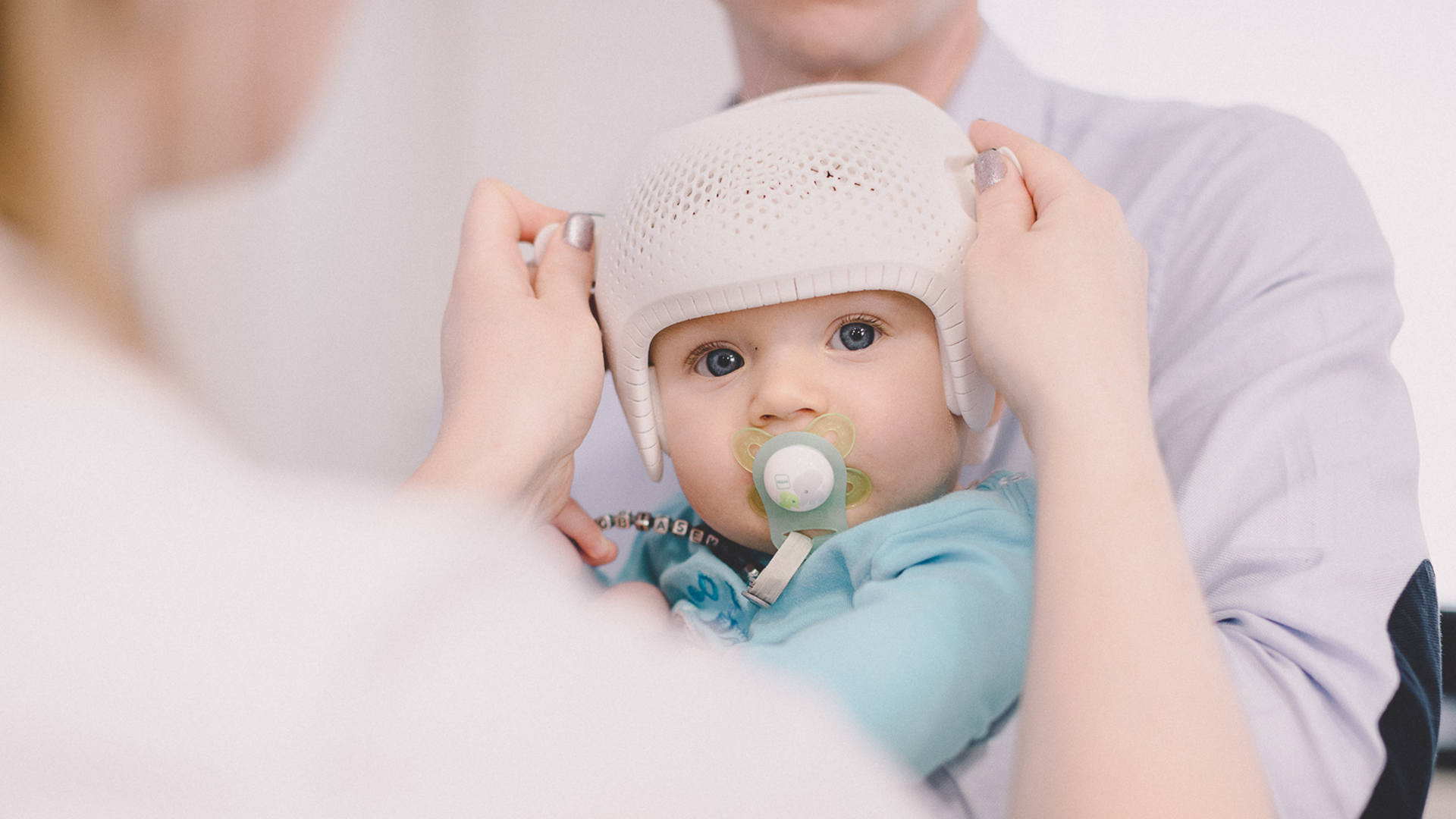
Treatment for Mild Plagiocephaly
Who can treat plagiocephaly depends on the treatment you are opting for. For babies under the age of four months, it is recommended that parents try repositioning techniques and tummy time to see if this will help their baby’s plagiocephaly. Through advice from doctors, health advisors, us, or our repositioning guide, parents can carry this kind of flat head treatment out themselves at home.
Treatment for Severe Plagiocephaly
For babies with more severe cases of plagiocephaly, or when repositioning techniques and tummy time have not improved the plagiocephaly after around a month of trial, further plagiocephaly treatment is sometimes required. Plagiocephaly specialists with experience and knowledge in cranial remoulding can not only identify if further treatment is necessary, but they can also recommend and manage plagiocephaly treatment themselves.
Cranial remoulding was introduced to the UK by Steve Mottram, the Managing Director of Technology in Motion. Since then, Technology in Motion clinicians have treated thousands of babies suffering from plagiocephaly. The UK Health Service have always considered plagiocephaly to be a cosmetic condition and, as such, cranial treatment is not usually funded by the NHS, meaning that treatment cannot be referred for by your baby’s doctor.
How Does Cranial Remoulding Work?
Cranial remoulding works alongside the growth of a baby’s head to help direct it to a more normal head shape, relying on the softness of a baby’s skull to reform the shape. Depending on age, treatment usually takes 4 to 6 months, although the specific time varies between babies. When your baby is 18 to 24 months old, head growth has nearly completed and the bones in the skull are firmer. This means that treatment cannot be started after the age of 14 months and the head can no longer be remoulded using a helmet. In these circumstances, the only way to correct a misshapen head would be through plagiocephaly surgery. However, this is only ever an option in extreme cases and is not common.

When Does Plagiocephaly Need to be Treated?
In many cases, plagiocephaly is mild to moderate and this usually means that a misshapen head can correct itself, particularly if parents are aware of it and utilise repositioning techniques.
It’s only for more severe cases that further plagiocephaly treatment is appropriate. This is not a must, but there are various long-term effects of un-treated plagiocephaly that often make pain-free helmet treatment worthwhile.
How Do Clinicians Treat Plagiocephaly
The first thing a clinician does is determine the severity of a baby’s plagiocephaly. The severity of Plagiocephaly is defined through various monitoring techniques and accurate, specialist equipment. If a baby’s plagiocephaly is mild to moderate, clinicians will usually advise parents to try repositioning techniques and tummy time to see if the plagiocephaly will improve on its own. For those with severe cases, helmet treatment is recommended to correct the head shape whilst it is still possible.
Once treatment has been decided on, clinicians take a safe photographic scan of a baby’s head and a custom made helmet is produced specifically for your baby. It’s the role of the clinician to ensure that the baby’s head is correctly measured and to offer support and advice to parents when it comes to taking the helmet on and off, alongside any other adjustments that need to be made in response to wearing the helmet.
Clinicians are always a phone call or appointment away should parents ever need any advice. Babies tend to have a few check-up appointments with the clinician throughout treatment to monitor progress. Plagiocephaly helmets sometimes need to be adjusted as a baby’s head grows, and this can be done at these appointments.
To ensure that your baby is receiving the right treatment, it’s important to choose a company that is experienced, caring, and informative. At Technology in Motion, we have a collection of stories from parents whose baby has been treated with a helmet at Technology in Motion, to help those who are unsure about the treatment. We have years of experience in treating plagiocephaly and we are dedicated to spreading awareness of the condition and the treatment available for it.
In light of finding out information regarding who can treat plagiocephaly, if you would like any advice or information on treatment for plagiocephaly, please do not hesitate to get in touch with one of our friendly team!


